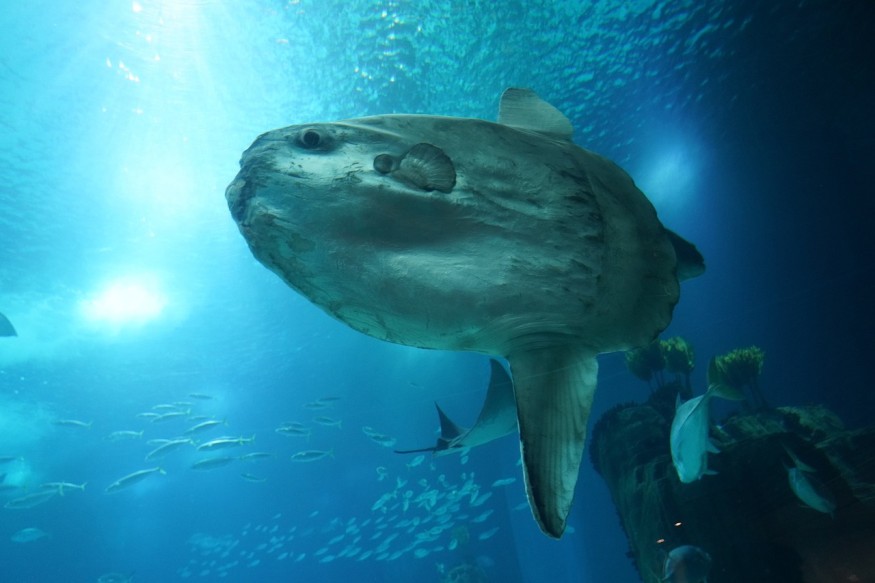A giant ocean sunfish was spotted stranded along the UK coast earlier this week.
The bizarre appearance of the sea creature with unusual skeletons and large built is peculiar to the UK, as the marine animal mostly swim in tropical waters, far from the waters of the British isles.
Norfolk Beach Sunfish

Beachgoer Katherine Hawkes, 39, was on her usual day with her family at the Great Yarmouth beach in Norfolk, England, when she spotted the stranded ocean sunfish measuring 1.5 meters (five feet) tall, according to the Daily Mirror.
Hawkes noticed the juvenile sunfish or baby sunfish, which is already large for its estimated young age but can grow up to three meters in height as an adult.
It is unclear how the enormous fish got into the shore of Norfolk beach but initial reports suggest the stranding was only recent.
Hawkes, who is a photographer, initially thought that the giant sunfish was a seal pup when she first encountered it, but she was excited to take a picture of the washed up creature.
Despite her enthusiasm on the animal, the beachgoer said it was odd-looking and was sad after it died.
The stranded giant ocean sunfish likely died due to starvation and inability to withstand the cold temperatures of the North Sea, according to Rob Spray, a joint coordinator at conservation charity Seasearch East.
Spray added that the sunfish is not commonly spotted in the North Sea, asserting that it is quite a big fish to be found in these waters.
Related incidents have been reported in recent years. In 2019, marine biologist Carol "Krill" Carson told the Cape Cod Times that there are several dozen or more sunfish being stranded on beaches annually, including in Cape Cod, as cited by The Associated Press.
Carson said there were about 130 reported strandings in 2019, indicating a sharp rise in stranded sunfish, which can migrate from the Caribbean Sea to the Gulf of Mexico during the winter.
Also Read: 'Lazy' Sunfish is Actually an Active Killer
What is the Ocean Sunfish?
The ocean sunfish (mola mola) gets its name from the habit of floating on its side along the sea surface as a form of sun bathing.
The fish species has no tail and swims using its very large dorsal fin and anal fin.
It is considered the heaviest bony fish on Earth, reaching weights of up to 5100 pounds (2300 kilograms), according to the non-profit conservation organization Oceana.
The mola mola's preferred main prey are jellyfishes, which consists of water but are low in calories or nutrients, so a fish with a large body as the ocean sunfish has to eat a lot of jellyfish to sustain its weight.
Oceana added that the sunfish has natural high growth rate and can gain hundreds of pounds within a year.
In terms of reproduction, the reproductive behaviors of the sunfish are not widely known, but the specie reproduce via broadcast spawning, where female sunfish release eggs and males release sperm into the water at the same time.
The females can produce over 300 million eggs at a time, the organization said.
© 2025 NatureWorldNews.com All rights reserved. Do not reproduce without permission.





